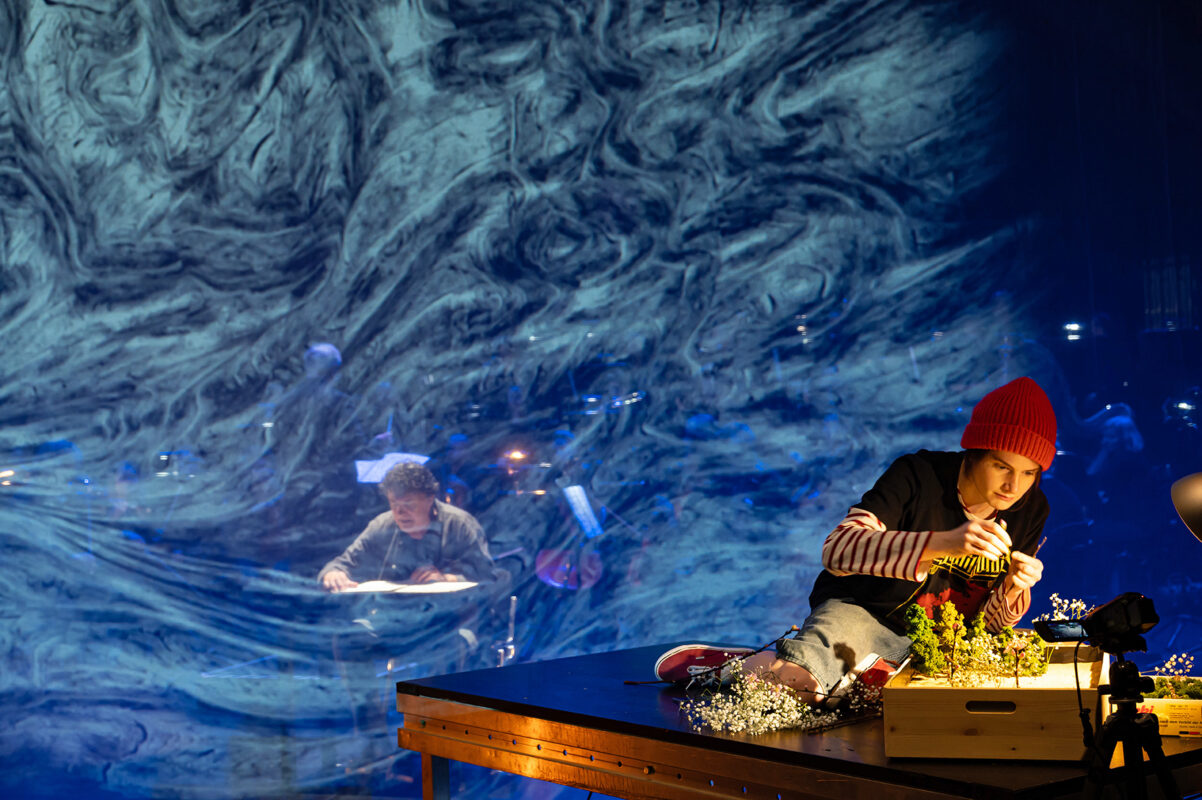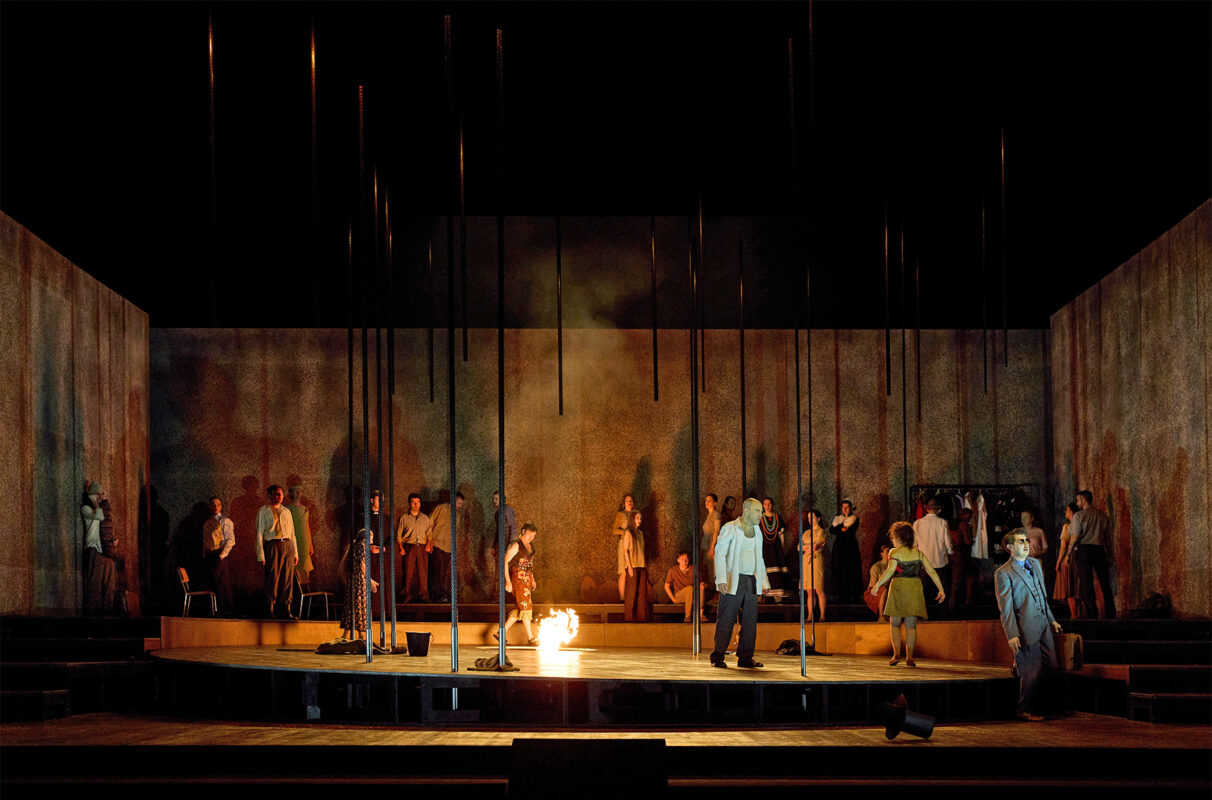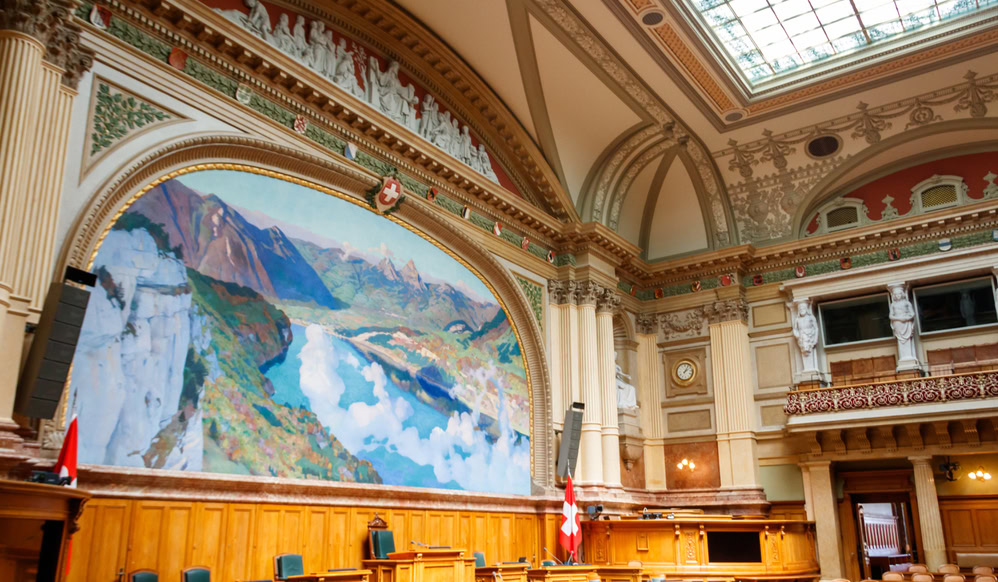New music shakes things up
On March 5 in Lugano, one of the newest and most important chapters in the (brief) history of contemporary music in Italian-speaking Switzerland was written.
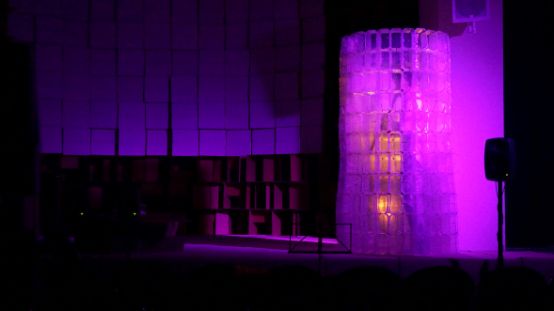
A stage completely lined with cardboard boxes, some brown, others white. At the beginning and end of the hall are two large, transparent cylinders made of plastic packaging in which people appear to be hiding.
This could, or perhaps should, be the starting point for reporting on the third event of Neon&Caffeine, the innovative series of contemporary concerts sponsored by the Conservatorio della Svizzera italiana.
-
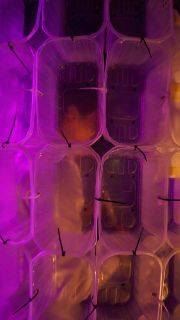
- Photo: Iris Ponti
Based only on the immediate impression of this evening, however, it would be difficult to understand the motives for such an event and similar projects involving the provision of new, sophisticated music. Certainly, but Neon&Caffeine is not only a thematic collection of four annual concerts, but also a destination point on the decades-long, winding path that contemporary music has taken in southern Alpine Switzerland. It all began in the middle of the last century with isolated, imported programs linked to personalities such as Wladimir Vogel or Hermann Scherchen. It continued in 1977 with the generation of OGGImusica concerts, which emerged both spontaneously and from their own, well-meaning ideological breeding ground, and which ultimately led to the decline of the 1990s, when premieres gradually disappeared from the official symphonic repertoire and the audience for the traditional chamber music events dwindled. A revival around the year 2000 seemed to have a good chance thanks to the synergy between Rete Due and the Conservatory, which founded 900presente (still more rooted in the 20th century than the present) and the creation of La Via Lattea, which was, however, difficult to categorize as a concert in the usual setting. But in the middle of the noughties, of all times, we were faced with two potentially definitive facts: the feared dissolution of the OGGImusica association and the regrettable announcement by the director of the Teatro Sociale di Bellinzona that the Swiss Chamber Concerts were coming to an end. Despite all possible efforts, there no longer seemed to be an audience interested in new music.
What did that mean? What could be done about it? Did it really make sense to continue championing contemporary art or did we perhaps simply have to accept that Italian culture was unassailably resistant to this kind of music?
The most determined and positive answer to these justified doubts was provided by a young composer from Ticino, who had returned home immediately after countless visits throughout Europe and had been awarded various prizes. He was motivated to replant the seed of the dying tree in the parched land of his own origin in order to cultivate it in a new, very loving and less dogmatic way. In fact, we owe to Nadir Vassena the revival of OGGImusica, the creation of a viable composition class at the CSL, the constant dialogue with the most important authors and the most credible institutions of national and international scale, as well as the centralized coordination of all the events that now take place under the Lugano Modern label. Of course, it is not the case that Vassena could have done all this alone. But it is undeniable that without a similar personality - Italian-Swiss at heart and at the same time a true and genuine bridge to the north and south - there would be a completely different story to tell here (a dodecaphonic de profundis?).
Vassena's most ingenious invention, more unpredictable, atypical, syncritical and therefore more critical of the times, was to bring concerts to life as true spectacles and to present new music in a completely unfamiliar setting. The problem to be solved was to win back a curious and demanding audience, which over the years had been disappointed (perhaps even betrayed?) by the contemporary music presented in the usual frontal concerts. With the Lanterna Rossa festival in 2010, a mode was found that did not simply place the new music brightly in the center (quasi as a totem of aesthetic experience to be revered a priori), but gave it a perfectly coordinated environment that embraced you during the performance, drew you in and never let go. This was created through lighting effects, video, theater, installations or dance, always in a thematically coherent concept (also thanks to the flourishing inventiveness of director Fabrizio Rosso). In this way, it was indeed possible to reach a large audience anew and bring them into contact with the boldest works of contemporary art.
This predecessor was finally replaced last year by Neon&Caffeine, another festival where new music asserts itself in a quasi-subliminal way. Instead of the characteristic themes, a personality is now at the center of each episode. Preferably not an artist, never a musician, but in any case a person who lives a relationship to creative themes in their daily activities. Last March 5 was the evening of Giosè Casalotto, owner of Finser Packaging. In the video interview, alternating with the musical pieces, he dealt with fundamental themes for both the company and the art of sound, such as invention, risk, confrontation, finance and passion. The works of Steve Reich, Mathias Steinauer and Yves Daoust, as well as the guest protagonist of the event, have been integrated into the stage set made from packages, which also explains the strange decor described here at the beginning. A different and certainly unusual way to offer a functional approach to the most advanced works of musical art and to create a rich, genuine experience for the audience that was already thought to have been lost. So let's hope that it will not be lost again.






